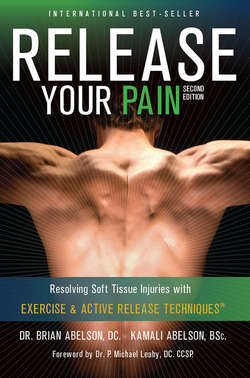Читать книгу Release Your Pain: 2nd Edition - EBOOK - Dr. Brian James Abelson DC. - Страница 36
На сайте Литреса книга снята с продажи.
Motions of the Neck and Back
ОглавлениеYour spinal column performs four fundamental motions: flexion, extension, lateral flexion, and rotation. The majority of these movements take place in your neck (cervical spine) and in your low back (lumbar spine). The mid-back (thoracic) motion is more restricted since the vertebrae are attached to the ribs in this region.
Generally speaking, the muscles on the front of the body (anterior to the spine) are involved in the motions of flexion, lateral flexion, and rotation. The muscles on the back of the body (posterior to the spine) are involved in extension, lateral flexion, and rotation.
By observing deviations from expected normal motions, the practitioner is able to identify exactly which structures in the neck and back have been affected by a specific injury. This information also lets the practitioner determine whether the primary muscles (agonists) or oppositional muscles (antagonists) have been impacted by the injury. By combining this information with a full-body examination and an extensive palpatory examination, the practitioner is able to obtain comprehensive insight into the structures that need to be treated to resolve each spinal condition.
Thus, an injury or restriction to one structure can directly affect the function and ability of other structures far up or down the kinetic chain. By developing an understanding of these interconnections, you can quickly develop an insight into how these kinetic chain relationships work, and how a simple problem can quickly cascade into problems in multiple areas.
